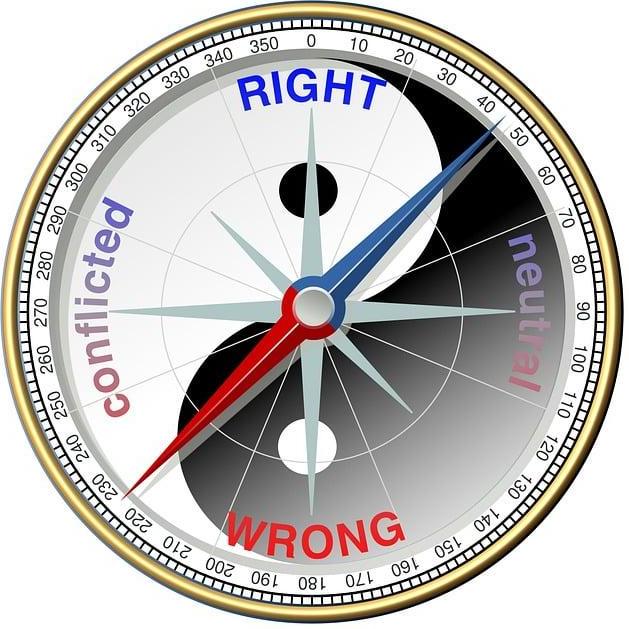How does the intensifying strategic competition between the US and China affect the security and economic decisions of countries in the Indo-Pacific, particularly in relation to Taiwan and the South China Sea?
The intensifying strategic competition between the US and China forces countries in the Indo-Pacific to make complex choices that significantly affect their security and economic decisions.
They must navigate a difficult path between their economic reliance on China and their security dependence on the US, a dynamic often described as "hedging".
This balancing act is becoming increasingly difficult as both superpowers demand clearer alignment.
Security Decisions-
The military rivalry between the US and China directly influences regional security decisions, particularly regarding Taiwan and the South China Sea.
Taiwan: The threat of a potential Chinese invasion of Taiwan has prompted the US and its allies to strengthen their military presence and cooperation in the region. This has led to:
Increased Military Alliances: The US has revitalized existing alliances and created new security partnerships, such as AUKUS (Australia, UK, US) and the Quad (US, Japan, India, Australia). These alliances are designed to enhance collective security and deter Chinese aggression, but they're viewed by China as an attempt at encirclement.
Taiwan's Defense Modernization: Taiwan itself is accelerating its own defense modernization efforts, acquiring advanced weaponry and training to strengthen its deterrence capabilities against a possible attack from China.
South China Sea: China's expansive territorial claims and construction of military bases on artificial islands in the South China Sea directly challenge the maritime security of its neighbors. This has led to:
Freedom of Navigation Operations (FONOPs): The US regularly conducts these operations to challenge China's claims and uphold international law, which is seen by some Southeast Asian nations as a necessary counterweight to Chinese assertiveness.
Regional Military Spending: Countries with competing claims, such as Vietnam and the Philippines, are increasing their military spending and forging stronger security ties with the US and its allies. This creates an arms race dynamic in the region and raises the risk of accidental confrontation.
Economic Decisions-
Economically, the US-China rivalry is forcing a reassessment of global supply chains and trade relationships.
Supply Chain Diversification: Many countries are re-evaluating their economic reliance on China, especially after the COVID-19 pandemic and the US-China trade war exposed the vulnerabilities of having concentrated supply chains.
This has led to a "China-plus-one" strategy, where countries seek to diversify their manufacturing and production to other nations, with Southeast Asian countries often being the beneficiaries.
Competing Economic Blocs: The US has launched initiatives like the Indo-Pacific Economic Framework for Prosperity (IPEF) to offer an alternative to China's economic influence, which is primarily driven by its massive Belt and Road Initiative (BRI).
Countries are now faced with the choice of engaging with these competing economic frameworks, each with its own set of rules and benefits.
Taiwan's Economic Vulnerability: Taiwan is at the center of this economic competition due to its dominance in the semiconductor industry.
The US is pressuring Taiwan to align with its policies to secure its supply of advanced chips, while China uses its economic leverage to isolate Taiwan.
This makes Taiwan's economy a key strategic asset and a potential target in any future conflict.
The intensifying strategic competition between the US and China forces countries in the Indo-Pacific to make complex choices that significantly affect their security and economic decisions.
They must navigate a difficult path between their economic reliance on China and their security dependence on the US, a dynamic often described as "hedging".
This balancing act is becoming increasingly difficult as both superpowers demand clearer alignment.
Security Decisions-
The military rivalry between the US and China directly influences regional security decisions, particularly regarding Taiwan and the South China Sea.
Taiwan: The threat of a potential Chinese invasion of Taiwan has prompted the US and its allies to strengthen their military presence and cooperation in the region. This has led to:
Increased Military Alliances: The US has revitalized existing alliances and created new security partnerships, such as AUKUS (Australia, UK, US) and the Quad (US, Japan, India, Australia). These alliances are designed to enhance collective security and deter Chinese aggression, but they're viewed by China as an attempt at encirclement.
Taiwan's Defense Modernization: Taiwan itself is accelerating its own defense modernization efforts, acquiring advanced weaponry and training to strengthen its deterrence capabilities against a possible attack from China.
South China Sea: China's expansive territorial claims and construction of military bases on artificial islands in the South China Sea directly challenge the maritime security of its neighbors. This has led to:
Freedom of Navigation Operations (FONOPs): The US regularly conducts these operations to challenge China's claims and uphold international law, which is seen by some Southeast Asian nations as a necessary counterweight to Chinese assertiveness.
Regional Military Spending: Countries with competing claims, such as Vietnam and the Philippines, are increasing their military spending and forging stronger security ties with the US and its allies. This creates an arms race dynamic in the region and raises the risk of accidental confrontation.
Economic Decisions-
Economically, the US-China rivalry is forcing a reassessment of global supply chains and trade relationships.
Supply Chain Diversification: Many countries are re-evaluating their economic reliance on China, especially after the COVID-19 pandemic and the US-China trade war exposed the vulnerabilities of having concentrated supply chains.
This has led to a "China-plus-one" strategy, where countries seek to diversify their manufacturing and production to other nations, with Southeast Asian countries often being the beneficiaries.
Competing Economic Blocs: The US has launched initiatives like the Indo-Pacific Economic Framework for Prosperity (IPEF) to offer an alternative to China's economic influence, which is primarily driven by its massive Belt and Road Initiative (BRI).
Countries are now faced with the choice of engaging with these competing economic frameworks, each with its own set of rules and benefits.
Taiwan's Economic Vulnerability: Taiwan is at the center of this economic competition due to its dominance in the semiconductor industry.
The US is pressuring Taiwan to align with its policies to secure its supply of advanced chips, while China uses its economic leverage to isolate Taiwan.
This makes Taiwan's economy a key strategic asset and a potential target in any future conflict.
How does the intensifying strategic competition between the US and China affect the security and economic decisions of countries in the Indo-Pacific, particularly in relation to Taiwan and the South China Sea?
The intensifying strategic competition between the US and China forces countries in the Indo-Pacific to make complex choices that significantly affect their security and economic decisions.
They must navigate a difficult path between their economic reliance on China and their security dependence on the US, a dynamic often described as "hedging".
This balancing act is becoming increasingly difficult as both superpowers demand clearer alignment.
Security Decisions-
The military rivalry between the US and China directly influences regional security decisions, particularly regarding Taiwan and the South China Sea.
Taiwan: The threat of a potential Chinese invasion of Taiwan has prompted the US and its allies to strengthen their military presence and cooperation in the region. This has led to:
Increased Military Alliances: The US has revitalized existing alliances and created new security partnerships, such as AUKUS (Australia, UK, US) and the Quad (US, Japan, India, Australia). These alliances are designed to enhance collective security and deter Chinese aggression, but they're viewed by China as an attempt at encirclement.
Taiwan's Defense Modernization: Taiwan itself is accelerating its own defense modernization efforts, acquiring advanced weaponry and training to strengthen its deterrence capabilities against a possible attack from China.
South China Sea: China's expansive territorial claims and construction of military bases on artificial islands in the South China Sea directly challenge the maritime security of its neighbors. This has led to:
Freedom of Navigation Operations (FONOPs): The US regularly conducts these operations to challenge China's claims and uphold international law, which is seen by some Southeast Asian nations as a necessary counterweight to Chinese assertiveness.
Regional Military Spending: Countries with competing claims, such as Vietnam and the Philippines, are increasing their military spending and forging stronger security ties with the US and its allies. This creates an arms race dynamic in the region and raises the risk of accidental confrontation.
Economic Decisions-
Economically, the US-China rivalry is forcing a reassessment of global supply chains and trade relationships.
Supply Chain Diversification: Many countries are re-evaluating their economic reliance on China, especially after the COVID-19 pandemic and the US-China trade war exposed the vulnerabilities of having concentrated supply chains.
This has led to a "China-plus-one" strategy, where countries seek to diversify their manufacturing and production to other nations, with Southeast Asian countries often being the beneficiaries.
Competing Economic Blocs: The US has launched initiatives like the Indo-Pacific Economic Framework for Prosperity (IPEF) to offer an alternative to China's economic influence, which is primarily driven by its massive Belt and Road Initiative (BRI).
Countries are now faced with the choice of engaging with these competing economic frameworks, each with its own set of rules and benefits.
Taiwan's Economic Vulnerability: Taiwan is at the center of this economic competition due to its dominance in the semiconductor industry.
The US is pressuring Taiwan to align with its policies to secure its supply of advanced chips, while China uses its economic leverage to isolate Taiwan.
This makes Taiwan's economy a key strategic asset and a potential target in any future conflict.
0 Комментарии
0 Поделились
2Кб Просмотры
0 предпросмотр










